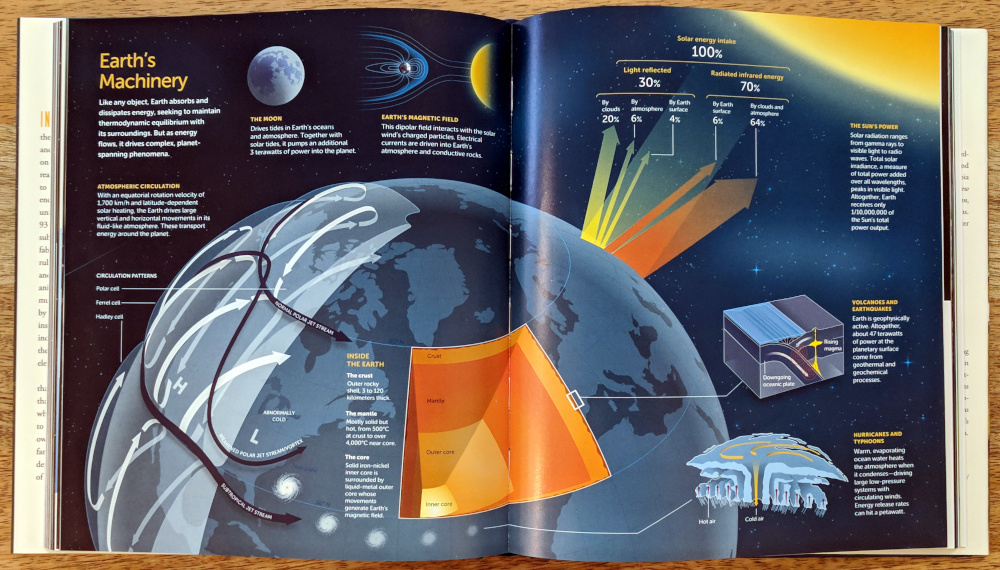Review: The Zoomable Universe
Back in 1977, Powers of Ten awed many children and adults alike with a presentation of our scientific understanding of the universe at different orders of magnitude, zooming out from a couple on a picnic blanket to the observable universe, then zooming back in, all the way down to the level of the hypothesized activity inside a single proton. (You can view the 9 minute film on YouTube.)
Astronomer Caleb Scharf’s book The Zoomable Universe updates this approach to our current understanding of the universe, aided by modernized visuals created by illustrator Ron Miller and a graphic design firm.
The book doesn’t start the journey on a picnic blanket, but at an order of magnitude of 10^27 meters—the “diameter of the cosmic horizon”—and ends at 10^-35 meters, the Plack length. At each order of magnitude, Scharf attempts to bring out astonishing facts, while narrating the journey in a conversational style.
Full-page photographs, computer renderings and information graphics support each section of the book. Their quality and aesthetic style are somewhat inconsistent throughout the book, ranging from pretty basic computer renderings of imaginary planets to detailed and striking illustrations like the one below.

Illustration of the different forces at work on planet Earth. (Credit: Caleb Scharf / Ron Miller / SW Infographics. Fair use.)
Scharf’s text is informative, but it’s in the nature of a book like this to provide limited depth on any one topic. The objective here is to create a sense of wonder, and a high level understanding of how the universe operates at different scales. In that sense, the book functions as a kind of paper planetarium.
To Scharf’s credit, he does not shy away from attempting to explain the weird and wonderful world of the subatomic, and the book’s illustration of the famous double-slit experiment and the different interpretations of its results is especially lucid.
The book concludes with a notes section that is very much worth reading, giving additional background on the thinking that went into each section, and pointing to books, papers and websites for further exploration. I give the author high marks for this approach: notes don’t have to be boring!
While I found much of the material in The Zoomable Universe quite familiar, I still appreciated its thoughtful organization and the engaging presentation. I would recommend the book especially for younger readers, or those seeking to re-engage with astronomy, physics and biology (perhaps after a less than stellar experience learning about those subjects in school).
